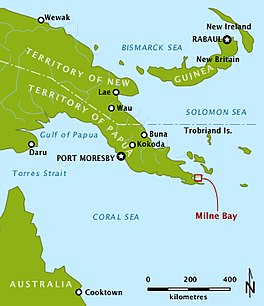| No. 2 Strip Milne Bay | |
|---|---|
 Location of No. 2 Strip Milne Bay | |
| Location | Milne Bay Province |
| Coordinates | 10°19′00″S150°15′00″E / 10.316667°S 150.25°E |
| Settlements | Naval Base Milne Bay 1942 |

No. 2 Strip Milne Bay, (Waigani Airfield), was an aerodrome under construction near Waigani village, Milne Bay, Papua New Guinea during World War II as part of Naval Base Milne Bay.
Works at the aerodrome were discontinued due to the site being unsuitable for an aerodrome due to drainage problems. Airfield was at 10°19′00″S150°15′00″E / 10.316667°S 150.25°E . [1] [2] [3] [4]
